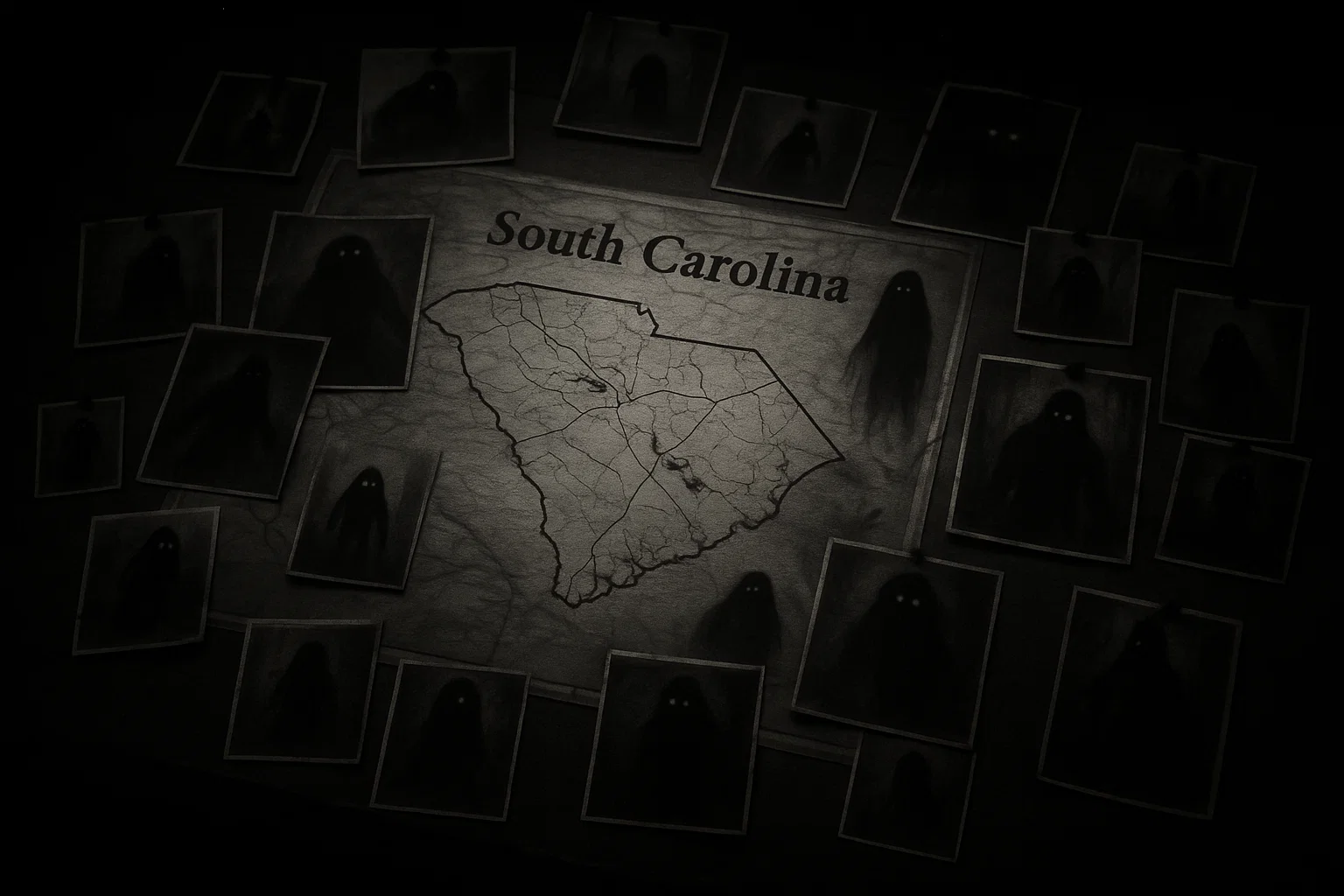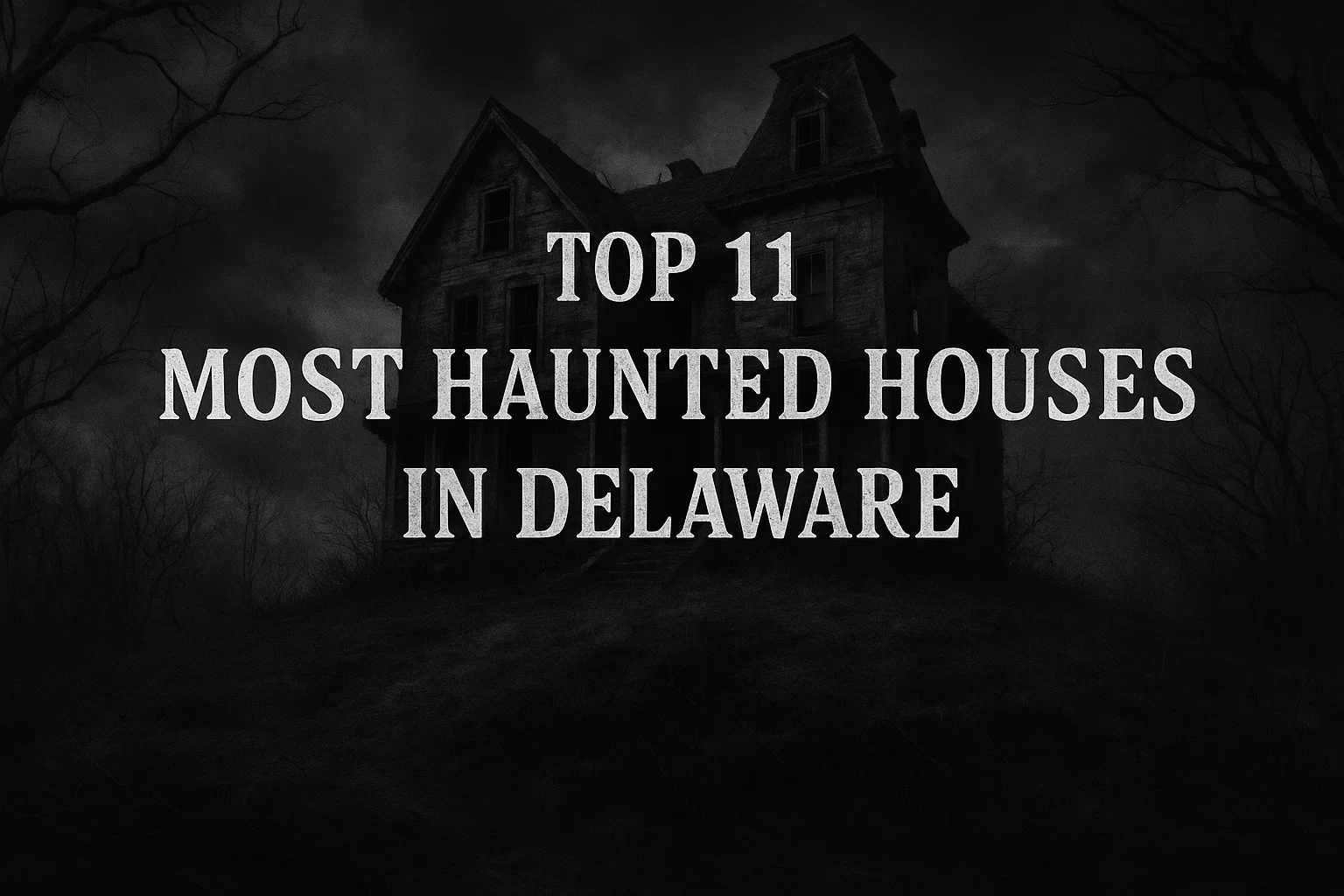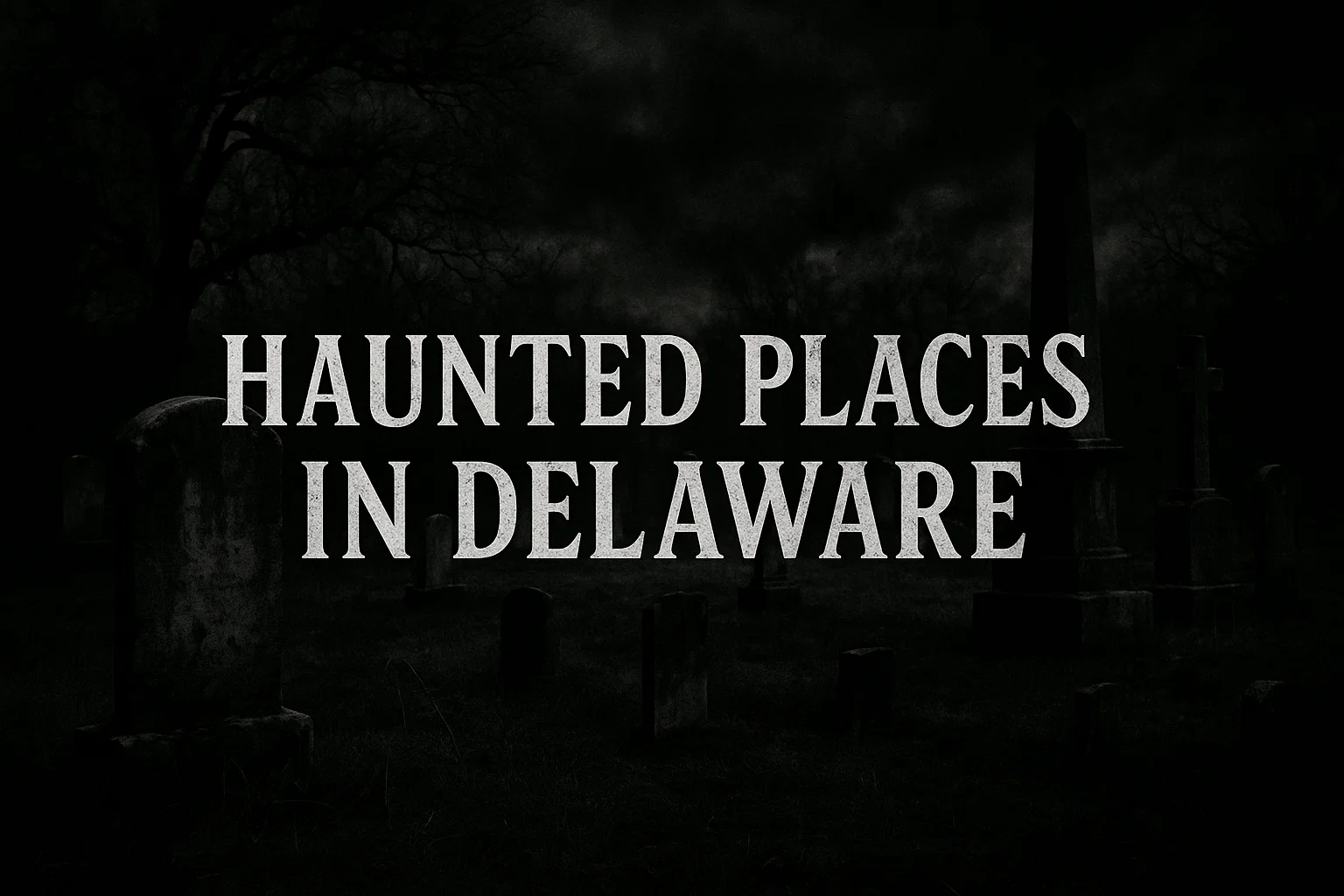South Carolina Bigfoot sightings have captivated imaginations for decades, weaving a thread of intrigue through the state’s misty swamps, dense forests, and rugged foothills. With over 59 documented encounters since 1964, as reported by the Bigfoot Field Researchers Organization (BFRO), South Carolina stands as an unexpected hub for Sasquatch lore.
From the Lowcountry’s shadowy marshes to the Upstate’s rolling hills, these sightings describe a towering, hairy, bipedal creature, often accompanied by eerie vocalizations, pungent odors, or massive footprints. This article explores the rich history of Bigfoot sightings in South Carolina, delves into investigative efforts, examines three pivotal cases, compares Bigfoot to other cryptids, and reflects on the cultural and natural significance of these enigmatic encounters.
Summary
South Carolina Bigfoot Sightings
The Palmetto State’s history of South Carolina Bigfoot sightings is as diverse as its landscapes, with reports spanning coastal plains, piedmont regions, and mountainous terrains. The BFRO has cataloged 59 sightings across 27 of South Carolina’s 46 counties, with Lee County leading as a hotspot with eight documented incidents.
Witnesses, ranging from hunters to park visitors, consistently describe a creature standing 6 to 9 feet tall, covered in dark brown or black fur, with human-like features and a musky scent. These encounters often occur near swamps, rivers, or powerline cuts, suggesting the creature favors areas with dense cover and abundant resources.
The table below provides a comprehensive overview of South Carolina Bigfoot sightings, compiled from BFRO reports and other credible sources, organized chronologically:
| Date | Witness | Location | Description |
|---|---|---|---|
| June 15, 1964 | Anonymous | Hampton County, near Yemassee | A boy camping in the woods reported a large, hairy creature watching him; his brother noted his terror, unusual for their swamp adventures. |
| Fall 1964 | Anonymous U.S. Army soldier | Fort Jackson, Richland County | During a nighttime training mission, heard a creature approach, making a “backwards growling” sound; it fled after he shouted, “Who goes there?” |
| April 1974 | Anonymous security guard | Myrtle Beach Air Force Base, Horry County | Observed a tall, hairy figure at night near the base; no further details provided. |
| 1983 | Anonymous respected community member | Wateree State Park, Kershaw County | Encountered a 6+ foot tall, black, hairy creature with glowing red eyes and a rotting odor near the park’s trails. |
| September 1998 | Anonymous motorist | Highway 917, Horry County | Saw a tall, upright creature crossing the road at night; described as hairy with long arms. |
| May 2007 | Anonymous | Near Bluffton, Beaufort County | Heard a loud exhale and found a clear, large footprint the next day on private property. |
| April 2007 | Anonymous pedestrian | Little River, Horry County | Spotted a large, hairy creature on the outskirts of town; no further details provided. |
| July 2013 | Amy George | Oconee County | While investigating with family, saw a large, hairy, bipedal creature emerge from brush; stared briefly before it retreated. |
| August 2015 | Sarah (last name withheld) | Near Bishopville, Lee County | Saw a tall, dark figure running along a tree line after church; believed it was Bigfoot, not the Lizard Man. |
| July 5, 2022 | Anonymous professional forester | Near Clover, York County | Found a large, oval depression in grass, heard wood knocks, and detected a strong smell near a powerline cut. |
| August 7, 2022 | Dr. Bob Frady and two others | Hunting Island State Park, Beaufort County | Saw a 5-6 foot tall creature with dark brown, splotchy black hair crossing the lighthouse exit road; disappeared into dense forest. |
| February 10, 2023 | Anonymous couple | Near Union, Union County | Reported a 9-foot-tall, black creature repeatedly visiting their property, taunting them and their dog at night. |
| November 2, 2024 | J.M. | Near Pomaria, Newberry County | A police officer deer hunting heard a loud grunt and stomp; saw a 7-7.5 foot tall, brown, ape-like creature; they watched each other for 30 seconds before it walked away. |
You May Also Like: Complete Guide to Oklahoma Bigfoot Sightings (1942–2025)
Investigation Efforts in South Carolina
Investigating South Carolina Bigfoot sightings involves a blend of scientific rigor, local enthusiasm, and cultural curiosity. The Bigfoot Field Researchers Organization (BFRO), founded in 1995, remains the primary authority, employing a network of volunteer investigators to verify reports.
Led by figures like Matthew Moneymaker, the BFRO classifies sightings as Class A or Class B, conducts witness interviews, and performs site visits. For example, the 2024 Newberry County sighting was deemed credible after Moneymaker confirmed J.M.’s status as a police officer and noted the area’s proximity to the Palmetto Trail and powerline cuts, which are common in Sasquatch reports.
Beyond the BFRO, the Carolina Cryptid Crew, a group of over two dozen Upstate enthusiasts led by Amy George, actively investigates sightings across South Carolina, North Carolina, and Georgia. Since 2013, they have employed trail cameras, night vision scopes, and audio recorders to collect evidence, such as hair and scat, preserved sterilely for analysis.
George, who claims a personal encounter in Oconee County, emphasizes a scientific approach, blending technology with hunter-like methods. Their investigations focus on the Upstate’s 13 million acres of forests, prime habitat for a creature like Bigfoot.
Local festivals, such as Oconee County’s Bigfoot Festival and Bishopville’s Lizard Man Stomp, also foster community-driven investigations. These events attract researchers, enthusiasts, and witnesses who share stories and evidence, like plaster casts of footprints or recordings of strange vocalizations.
For instance, the 2022 Hunting Island sighting prompted park staff to initiate their own inquiry, reflecting grassroots interest. Additionally, cryptozoologist Lyle Blackburn has explored South Carolina’s cryptid scene, particularly in Lee County, where Bigfoot and Lizard Man sightings overlap, suggesting a shared environmental allure.
Skeptics, like University of South Carolina professor Barry Markovsky, challenge these efforts, citing a lack of definitive evidence like bones or clear photographs. Yet, investigators like Gwen Purcell and Terry Windell, who have had personal encounters, argue that firsthand experiences defy skepticism.
Purcell, who saw a black, upright creature in Pennsylvania, invites skeptics to join expeditions, emphasizing the unexplainable nature of these encounters. These diverse efforts—ranging from formal organizations to local initiatives—underscore the vibrant pursuit of answers in South Carolina’s cryptozoological landscape.
You May Also Like: Complete Guide to Oregon Bigfoot Sightings (1904–2025)
Detailed Case Studies
Three South Carolina Bigfoot sightings stand out for their detail, credibility, and impact on local lore. Below, we explore these cases, focusing on available witness testimonials and specific details.
November 2, 2024, Newberry County
On November 2, 2024, at approximately 6:30 AM, a police officer identified as J.M. was deer hunting on his family’s private land near Pomaria, Newberry County, about 25 miles northwest of Columbia. While sitting in a ground blind, he heard a “loud deep-toned grunt and a stomp at the same time.”
Turning to investigate, he saw a figure through the brush, approximately 7 to 7.5 feet tall, with long brown hair, an ape-like face, and long arms. J.M.’s report to the BFRO states, “We watched each other for probably thirty seconds but felt like forever before it turned and walked off. I’m a police officer and had no clue what to make of it. At this point as much as I didn’t want to admit it I am convinced it was a Bigfoot.”
The BFRO’s Matthew Moneymaker conducted a follow-up, noting the witness’s credibility and the area’s dense hardwood forests near a powerline cut and the Palmetto Trail. No physical evidence, like footprints, was reported, but the prolonged observation and J.M.’s professional background elevate this sighting’s significance.
August 7, 2022, Beaufort County
At Hunting Island State Park, on August 7, 2022, Dr. Bob Frady, a retired forensic psychologist, along with his brother and sister, witnessed a remarkable event around noon. Driving along the lighthouse exit road, they saw a creature cross the road 15-20 feet ahead.
The BFRO report quotes them: “The creature was walking upright, taking strides quickly to our left, and disappeared into the bush on the left side of the road directly in front of us. We only witnessed the lower torso of the creature as its head and shoulders were hidden behind a pine tree and a palmetto stump on the left side of the road. The height of the creature is estimated as being between 5 to 6 feet tall. Legs were approximately 3 feet long, human-like jointed knee, with dark brown, splotchy black hair that was approximately 2 inches long.”
The trio, all retired professionals, reported the sighting to park staff and the BFRO, which classified it as Class A due to the daylight conditions and multiple witnesses. The park superintendent deemed it a “credible incident” and launched an investigation, though no further evidence was found due to the dense palmetto and pine forest.
Fall 1964, Richland County
One of the earliest recorded South Carolina Bigfoot sightings occurred in the fall of 1964 at Fort Jackson, Richland County, during a U.S. Army escape-and-evasion training mission. A soldier, alone in the woods at night under a moonless sky, stopped at a fire lane crossing to rest.
His BFRO report recounts, “I waited until this thing (or maybe two things) was within a few steps of me, then I said ‘who goes there.’ This thing went to its left in a flash … then I heard what sounded like someone talking backwards in a sort of growl.”
When the creature approached again, he spoke once more, and it fled through the brush. The lack of moonlight limited visibility, but the soldier’s training and familiarity with the area ruled out common animals. This sighting, while lacking physical evidence, is notable for its historical context, predating the 1967 Patterson-Gimlin film that popularized Bigfoot nationally.
These cases highlight the diversity of Bigfoot sightings in South Carolina, from a modern, credible witness in a rural setting to a multi-witness daylight encounter and a historic military report, each adding depth to the state’s Sasquatch narrative.
You May Also Like: Complete Guide to Pennsylvania Bigfoot Sightings (1972–2025)
Bigfoot Sightings vs Other Cryptid Sightings in South Carolina
South Carolina’s cryptozoological tapestry extends beyond Bigfoot, encompassing a variety of creatures that haunt its swamps, rivers, and forests. These cryptids, while distinct, share the state’s wild landscapes, sparking speculation about their connections to South Carolina Bigfoot sightings.
Lizard Man of Scape Ore Swamp
The Lizard Man, first sighted on June 29, 1988, by 17-year-old Christopher Davis near Scape Ore Swamp in Lee County, is a 7-foot-tall, bipedal creature with green, scaly skin, red eyes, and three-fingered claws.
Davis reported to police, “I looked back and saw something running across the field towards me. It was about 25 yards away and I saw red eyes glowing. I ran into the car and as I locked it, the thing grabbed the door.”
The creature damaged his car’s mirror and roof. Subsequent reports noted three-toed footprints and vehicle damage, with local law enforcement making plaster casts. Sightings resurfaced in 2015, when a woman named Sarah saw a tall, scaly figure near Bishopville, and another witness captured a brief video. The Lizard Man Stomp festival celebrates this legend, drawing enthusiasts to Lee County, a hotspot for both Lizard Man and Bigfoot sightings.
Boo Hag
In Gullah-Geechee folklore, the Boo Hag is a skinless, hag-like spirit that “rides” sleeping victims, draining their energy. Described as a red, fleshy figure, it slips into homes at night, leaving its skin behind. While supernatural rather than zoological, the Boo Hag’s Lowcountry origins tie it to the same swampy environments as Bigfoot, though no direct connection exists.
Thunderbird
The Thunderbird, rooted in Santee Native American lore, is a massive bird said to create thunder with its wings. Sightings in South Carolina describe large, pterosaur-like creatures with orange eyes, often near rivers or swamps. These reports, while rare, align with Bigfoot’s preference for remote areas, but their aerial nature sets them apart.
You May Also Like: Complete Guide to Rhode Island Bigfoot Sightings (1974–2025)
Catawba River Runner
The Catawba River Runner, a lesser-known cryptid, is a serpentine creature reported in the Catawba, Wateree, and Congaree river systems. Described as a large, snake-like entity, it may relate to Bigfoot sightings near waterways, as some witnesses report creatures emerging from rivers. However, no direct evidence links the two.
Other unexplained phenomena enrich South Carolina’s lore. The Gray Man, a ghostly figure on Pawleys Island, appears before hurricanes, with sightings before Hurricane Hazel (1954), Hugo (1989), and Florence (2018). Horry County ranks high for UFO sightings, with 671.44 per 100,000 people in Surfside Beach, according to 2020 data.
The Third-Eye Man, a three-eyed figure in the University of South Carolina’s tunnels, was reported in 1949. These paranormal events, while distinct, share Bigfoot’s association with mystery and the unknown, reflecting South Carolina’s cultural fascination with the unexplained.
The overlap of Bigfoot and Lizard Man sightings in Lee County suggests a shared environmental draw—Scape Ore Swamp’s dense vegetation and isolation. However, their differing descriptions (hairy vs. scaly) argue against a direct connection, pointing instead to the region’s role as a cryptozoological hotspot.
Conclusion
South Carolina Bigfoot sightings weave a compelling narrative, blending credible witness accounts with the state’s wild, untamed landscapes. From the 1964 Fort Jackson encounter to the 2024 Newberry County sighting, these 59 reports, meticulously documented by the BFRO and local groups like the Carolina Cryptid Crew, paint a picture of a mysterious, elusive creature.
The consistency of descriptions—tall, hairy, bipedal, often near swamps or powerlines—fuels belief, while skeptics like Barry Markovsky highlight the absence of concrete evidence. Other cryptids, like the Lizard Man and Boo Hag, enrich South Carolina’s folklore, sharing the state’s shadowy forests and marshes but lacking direct ties to Bigfoot.
Bigfoot sightings in South Carolina continue to spark curiosity, drawing adventurers to explore the Palmetto State’s hidden corners and keeping the legend alive in festivals, investigations, and campfire tales.







